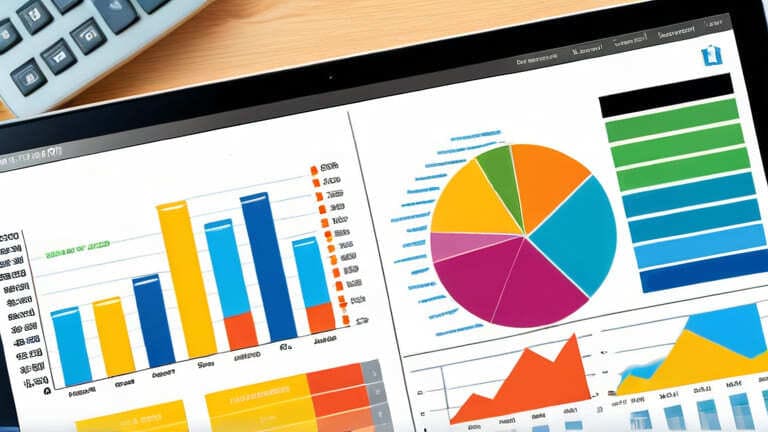
Tax code changes, including the opportunity for new Roth conversions or raising child tax credits boxes to $2,000, require working through modeling. To aid modeling, online calculators continue to evolve into valuable resources for processing many pieces of information, including rate forecasts with a scenario test to develop data-driven decisions.
Some calculators acknowledge other real-time feeds from NerdWallet, Dinkytown, etc., with uniquely identify cal-return estimators to review real-time performance, which is a departure from relying on spreadsheets or fixed pro forma statements. This note builds on the previous macro and long-term growth analysis and diverges with respect to modeling near-term decision-making opportunities/risk with a thorough depth of understanding and action, along the lines of long-term retirement, near-term debt, or changes in risk.
How Online Calculators Can Help You in 2025
Online financial calculators go beyond simple math skills to simulate economic factors, such as 3% projected GDP growth in 2025, and the impact of tariffs on imports. You have platforms to do what-if scenarios of inflation-adjusted returns and empower to watch your net worth in real time. In 2025 - a year of costly breaches (up 12%) and other cybersecurity challenges - secure tools with encryption guarantees the data will not be altered or compromised and will ensure data security, driven by encryption. Benefit from visualizations - mortgage amortization charts or graphs of compound interest - that expose hidden costs and results in adherence rates 25% higher than pencil-and-paper methods. Look for options that sync to a mobile device and have export to new figure collect for continuous audits.
Additionally, make sure tools can adjust abandonment factors, so they remain congruent with changing priorities and volatility (sustainable investments or gig economy income).

Top 10 Financial Planning Tips for 2025
Leverage these strategies, each amplified by targeted calculators, to navigate 2025's opportunities and risks. Focus on integration for holistic outcomes, drawing from year-end checklists and outlook reports.
- Bolster Your Emergency Fund: With the job market shifting slightly as unemployment moves toward 4.2%, aim for 6–9 months of expenses saved. To incorporate inflation at 2.4%, use a savings goal calculator found on NerdWallet.com, which would suggest saving $25,000 for your $60,000 household. You can utilize different variables for high-yield APYs above 5%, that would yield approximately 15% more than a regular savings account.
- Revamp Budgeting with Zero-Based Budgeting: Track your expenses, as every dollar has to be matched and categorized against your priorities. The study of remote work, documented by CNBC, showed an 8% increased variable cost because of the push towards remote work in 2025. Dinky town has a tool that will allow you to categorize outflows, simulating the cuts, to free up an extra amount of $300 a month for investments. You want to review it on a quarterly basis to iterate on seasonal expenses.
- Speed Up Debt Payoffs Taking Avalanche Approaches: With credit scoring pushing to 21%, focus on the balance you hold with a high-interest rate. Paying down a $10,000 load will save you $1,200 a year. And using a site like financialmentor.com where you can input extra payments, or a $200 windfall, will show you can speed up the timeline by up to 18 months and raise your credit scores 50 points.
- Maximize Your Retirement Contributions Utilizing New Limits: For those under 50 interest and limit will now raise to $7,500 through Roth advantages. Vanguard's retirement calculator also factors a return of 7% a year, stating that putting in an extra $500 a month will lead to a retirement of $1.2 million by age 65. One can also factor in catch-up provisions beyond 50, on a similar screen, and gain for retirement.
- Minimize Taxes with Scenario Planners: With the implications of the sunset on TCJA around the horizon, you might be faced with an increase in the effective tax rates between 2-3%. Using a deduction estimator similar to TurboTax you can gauge if charitable gift receipts should be bunched together, and realize a quarterly savings of something as simple as $1,500 of cash expenses through qualified improvements credits.
- Investment Diversification for Inflation Protection: Establish a 60/40 allocation in stocks-bonds, and express a preference for ESG funds that are anticipated to rise to 10%. Morningstar's portfolio analyzer will stress-test against 3% inflation and recommend rebalance, which increase the Sharpe ratio by 0.2.
- Insurance Gap Reviews: Your insurance needs to vary with climate risks and claims are up 15%. Policygenius.com calculators estimate your life policy and umbrella limits, revealing a $500,000 policy will run families $25 per month and still maximize at 28/36 debt ratios.
- Housing Affordability Planning for Easing Rates: 30-year mortgage rates are at 6.1%, but prices persist at $412,000 median. Use the Mortgage Calculator on Calcmate.org for $350,000 loan rates and calculate PITI for $70,000, 20% down (that avoids PMI) and saves $4,000 a year.
- College Education Savings with a 529 Plan model: College tuition inflation is at 4.5% so better to start early; children now have a credit for K-12. The savingsforcollege.com model illustrates saving $200 a month will land your child at $100,000 (tax-free) at college with a potential 5% state match.
- Estate Reviews for Future Generational Security: With estate exemption limits at $13.99 million, the focus will be on trusts; gifting at the limit will be easier. LegalZoom's estate planner tool will estimate your inheritance tax to give value-based guidelines for revocable trusts allows some to shield 30% more assets than probate costs.
Unifying Tools for Near-Lasting Mastery
Sync calculators into dashboards for a consolidated view, then audit annually against growth outlook just to tweak for risk-adjusted return if needed. Steer clear of silos; synchronize with Mint-like apps to get back into desired behavioral nudges. In a digital world of 2025, these tools no longer only analyze paths, rather, they outline choices you can make proactively to transform financial ambiguity into a strategy to master. Start with your net worth as of today and go buy. In order to transfer wealth, you have a lot of recording left to do.